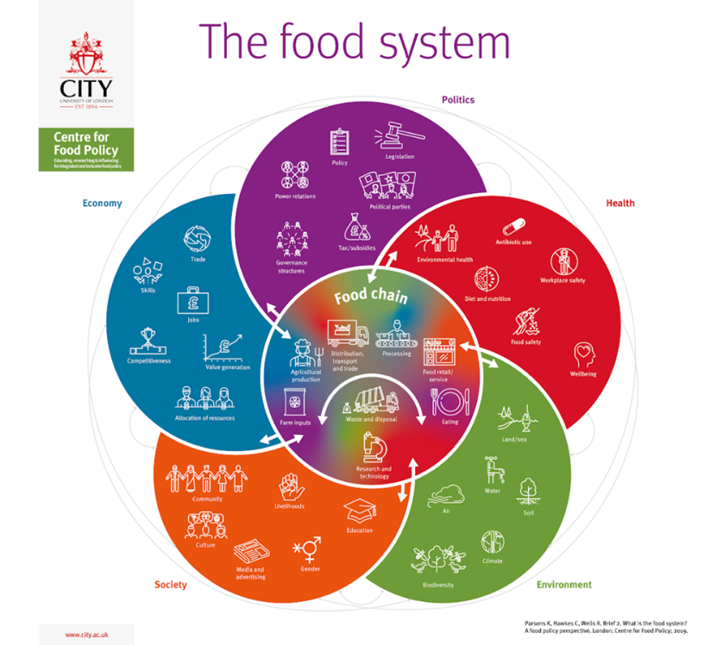The food system and health
“Food is the single strongest lever to optimize human health and environmental sustainability on Earth.” -Eat-Lancet Commission Report
The food system includes all the activities involved in producing, processing, packaging, distributing and marketing food, and managing surplus and wasted food. It is complex and interconnected, and affects health in many different ways.
Perhaps the most obvious link between food and health is through nutrition which is important at all stages of life for growth, development and disease prevention. Yet nutritious food tends to be more expensive and less easily accessible than ultra-processed products high in fat, salt and sugar. The inequities in the current food system are demonstrated by inequalities in dietary health, but also the scale of food insecurity that exists both locally and globally. Growing numbers of people are unable to afford and/or access sufficient quantities of appropriate, nutritious food to meet their needs. Our food system is increasingly dominated by a few commercial, multinational organisations often selling foods high in fat, salt and sugar with small local producers increasingly struggling to survive. Food system workers are more likely to be paid less than average wages and to be employed on precarious contracts.
More broadly, our current food system has significant impacts on health through damage to local and global environments, for example, to our climate, our soil, the quality of our water and air, biodiversity, and through increasing levels of antimicrobial resistance (AMR).

(Source: Centre for Food Policy, City University of London)
The diagram above shows the Centre for Food Policy’s model of the food system, one of many that have been produced to illustrate the complexity and interconnectedness of the food system.
